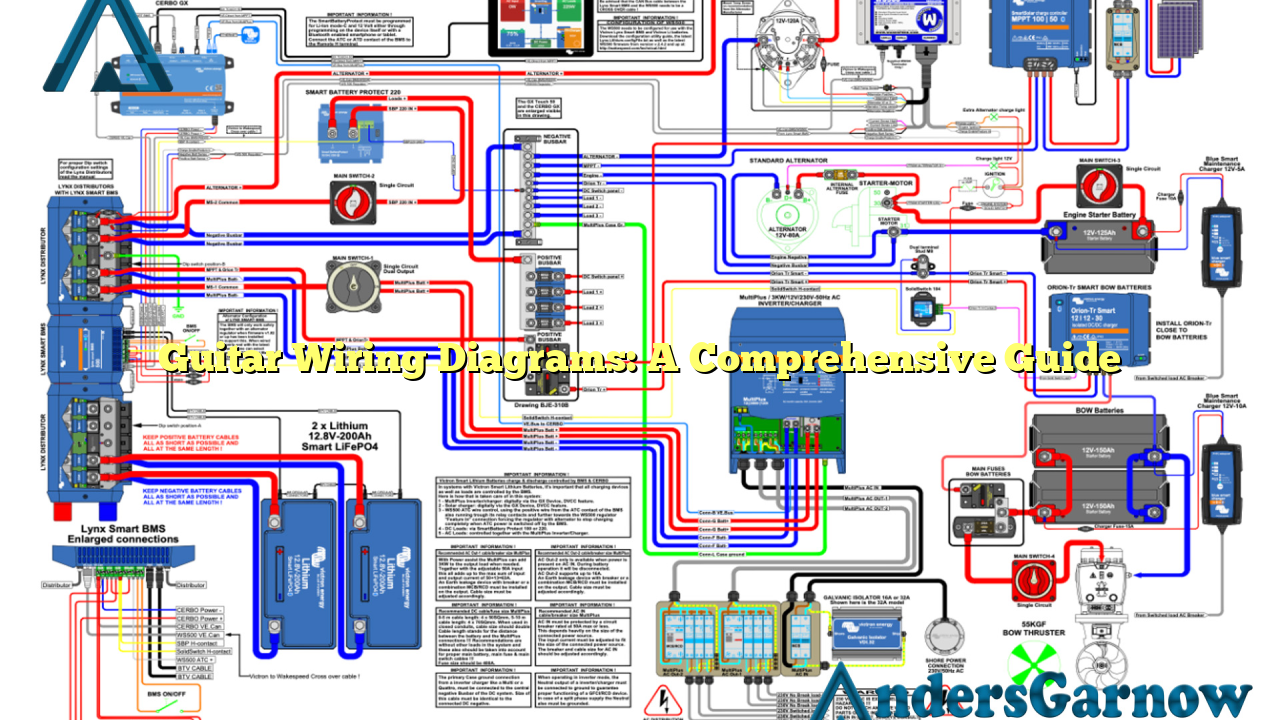Hello, music enthusiasts and guitar aficionados! In this article, we will delve into the fascinating world of guitar wiring diagrams. Whether you are a seasoned guitarist or a beginner, understanding the intricacies of guitar wiring diagrams is crucial for achieving the desired sound and customizing your instrument to suit your unique style. So, let’s embark on this journey together and explore the various aspects of guitar wiring diagrams.
1. What are Guitar Wiring Diagrams?
Guitar wiring diagrams are visual representations of the electrical circuits inside a guitar. These diagrams showcase the connections between various components such as pickups, switches, pots, and output jacks. By following these diagrams, guitarists can modify their instrument’s wiring to achieve different tones, coil splits, phase switching, and more.
Advantages:
– Customizability: Guitar wiring diagrams allow musicians to personalize their instrument’s sound by experimenting with different configurations.
– Versatility: With the help of wiring diagrams, guitarists can achieve a wide range of tones, making their instrument suitable for various genres and playing styles.
– Troubleshooting: Wiring diagrams are invaluable resources when it comes to diagnosing and fixing any electrical issues in a guitar.
Disadvantages:
– Complexity: For beginners, guitar wiring diagrams can be overwhelming due to the intricate nature of the circuits and the technical terminology involved.
– Risk of Damage: Incorrectly following a wiring diagram can potentially damage the guitar’s electronics, requiring costly repairs.
2. Types of Guitar Wiring Diagrams
Guitar wiring diagrams come in various configurations, each offering unique tonal possibilities. Some commonly used types include:
- 1. Standard Wiring: This is the most basic wiring scheme, commonly found in traditional guitars. It provides a straightforward connection between the pickups, switches, and controls.
- 2. Coil Splitting: This wiring allows guitarists to split humbucker pickups into single-coil mode, offering brighter and thinner tones.
- 3. Series/Parallel Wiring: By wiring pickups in series or parallel, musicians can achieve different levels of output and tonal characteristics.
- 4. Phase Switching: This wiring option allows players to reverse the phase relationship between two pickups, resulting in unique and distinct sounds.
Advantages:
– Enhanced Sonic Possibilities: Different wiring configurations offer a wide range of tonal options, allowing guitarists to explore new musical territories.
– Signature Sounds: Some guitar players are known for their unique wiring setups, which contribute to their iconic sound.
– Increased Pickup Versatility: Wiring diagrams enable guitarists to unlock the full potential of their pickups by utilizing different coil combinations and switching options.
Disadvantages:
– Learning Curve: Mastering the wiring modifications and understanding their impact on tone requires time and practice.
– Limited Space: Installing complex wiring setups may require additional cavity routing or modification, which might not be feasible on all guitar models.
3. Alternative Approaches to Guitar Wiring Diagrams
While traditional guitar wiring diagrams are widely used, some alternative approaches offer simplified solutions for guitarists:
- Solderless Wiring Kits: These kits utilize connectors and pre-wired components, eliminating the need for soldering and simplifying the installation process.
- Pre-Wired Pickguards: Designed as drop-in replacements, pre-wired pickguards come with all the necessary components and wiring, making upgrades hassle-free.
- Modular Systems: These systems offer interchangeable modules, allowing guitarists to easily modify their wiring setups without extensive soldering or rewiring.
Advantages:
– Ease of Installation: Alternative approaches often cater to guitarists who are less experienced in soldering or simply prefer a plug-and-play solution.
– Reversibility: These alternatives can be easily reversed or swapped out, making them ideal for musicians who frequently experiment with different setups.
– Time-Saving: Simplified wiring methods can significantly reduce the time spent on modifications, allowing guitarists to focus more on playing.
Disadvantages:
– Limited Customization: Alternative approaches may not offer the same level of flexibility and customization as traditional wiring diagrams.
– Compatibility Issues: Some alternative solutions may not be compatible with all guitar models or specific pickup configurations, limiting their applicability.
4. Comprehensive Guitar Wiring Diagram Table
| Component | Description | Function |
|---|---|---|
| Pickups | Electromagnetic transducers that capture string vibrations and convert them into electrical signals. | Produce sound and transmit it through the guitar’s circuitry. |
| Switches | Electrical devices used to open or close circuits, allowing the player to select different pickups or wiring options. | Determine which pickups are active and control various functions such as coil splitting or phase switching. |
| Pots (Potentiometers) | Variable resistors used to control the volume and tone of the guitar. | Adjust the output level and tonal characteristics of the instrument. |
| Output Jacks | Connectors that transfer the electrical signal from the guitar to an amplifier or other audio equipment. | Provide an output for the guitar’s sound. |
5. Frequently Asked Questions (FAQ)
Q: Can I modify my guitar’s wiring without any prior knowledge?
A: While it is possible, it is highly recommended to seek guidance from experienced individuals or consult professional guitar technicians to avoid any potential damage.
Q: Are there any safety precautions I should take when working with guitar wiring?
A: It is essential to disconnect the guitar from any power source, such as amplifiers or pedals, before attempting any modifications. Additionally, using appropriate tools and handling components with care is crucial.
Q: Can I revert the modifications if I’m not satisfied with the results?
A: In most cases, modifications made to a guitar’s wiring are reversible. However, it is always recommended to keep track of the original wiring and consult professionals if needed.
In Conclusion
Guitar wiring diagrams are invaluable resources for guitarists seeking to personalize their instrument’s sound and explore new sonic territories. While they may seem complex at first, understanding the various wiring configurations and their advantages can significantly enhance your playing experience. Whether you opt for traditional wiring diagrams or explore alternative approaches, always approach modifications with caution and seek expert advice if needed. So, grab your soldering iron and let your creativity flow as you unlock the full potential of your guitar!

